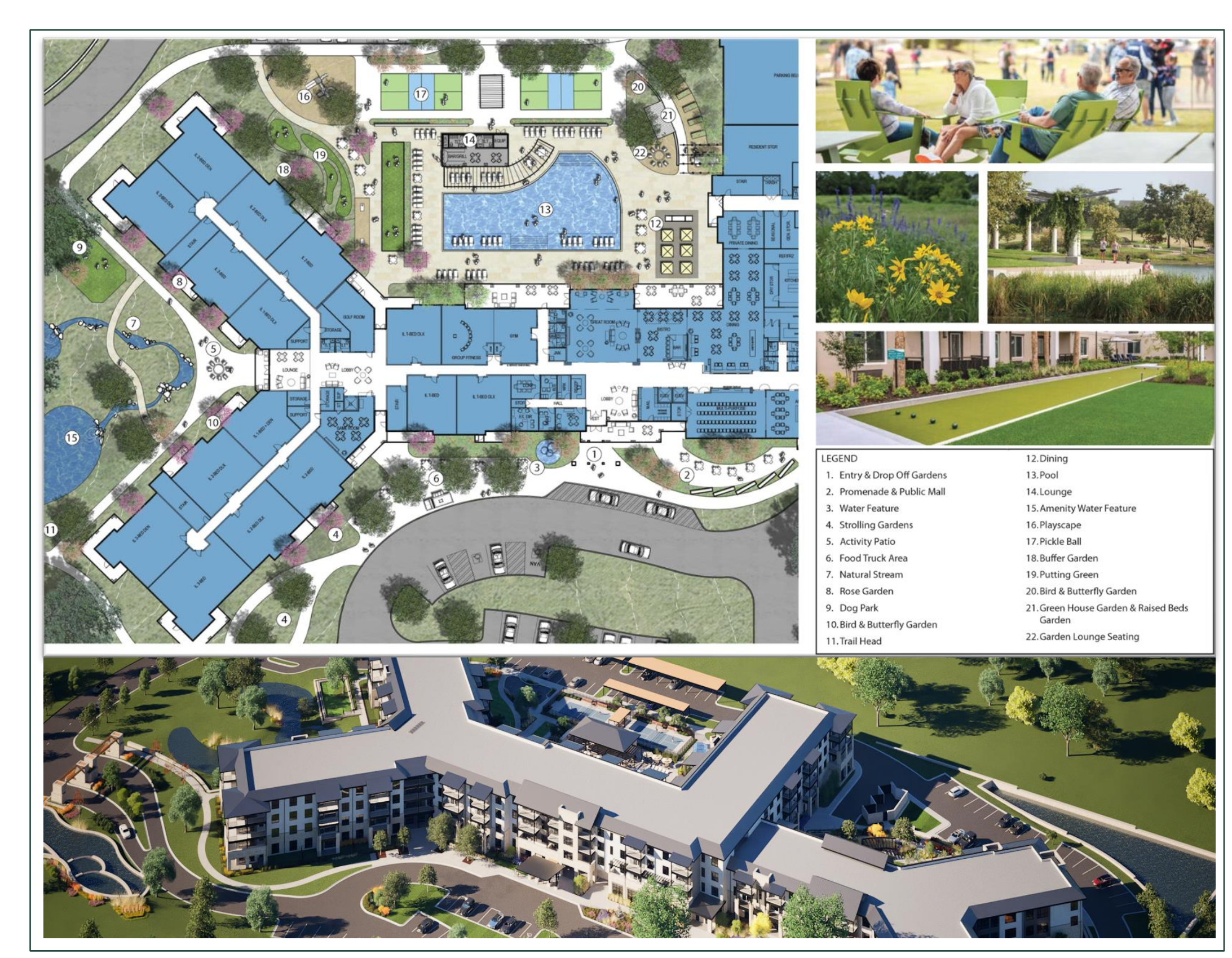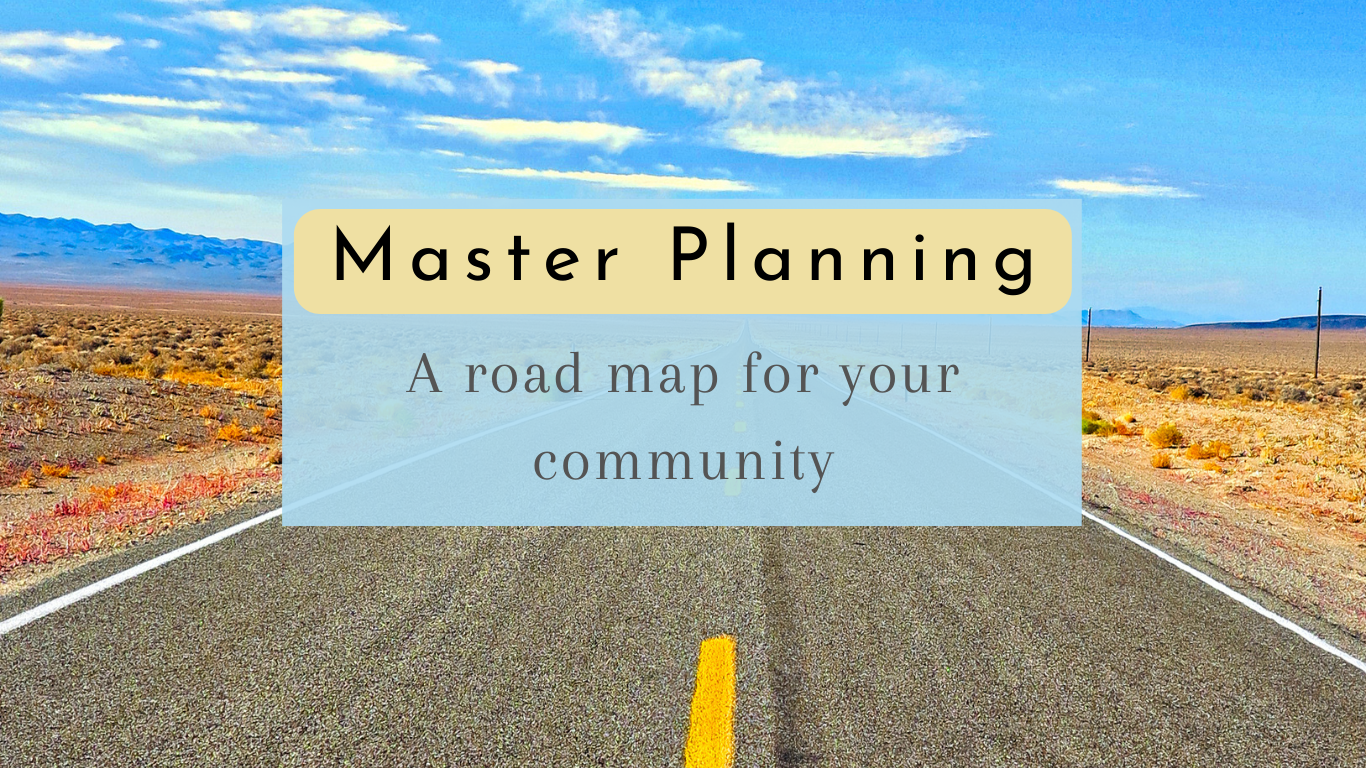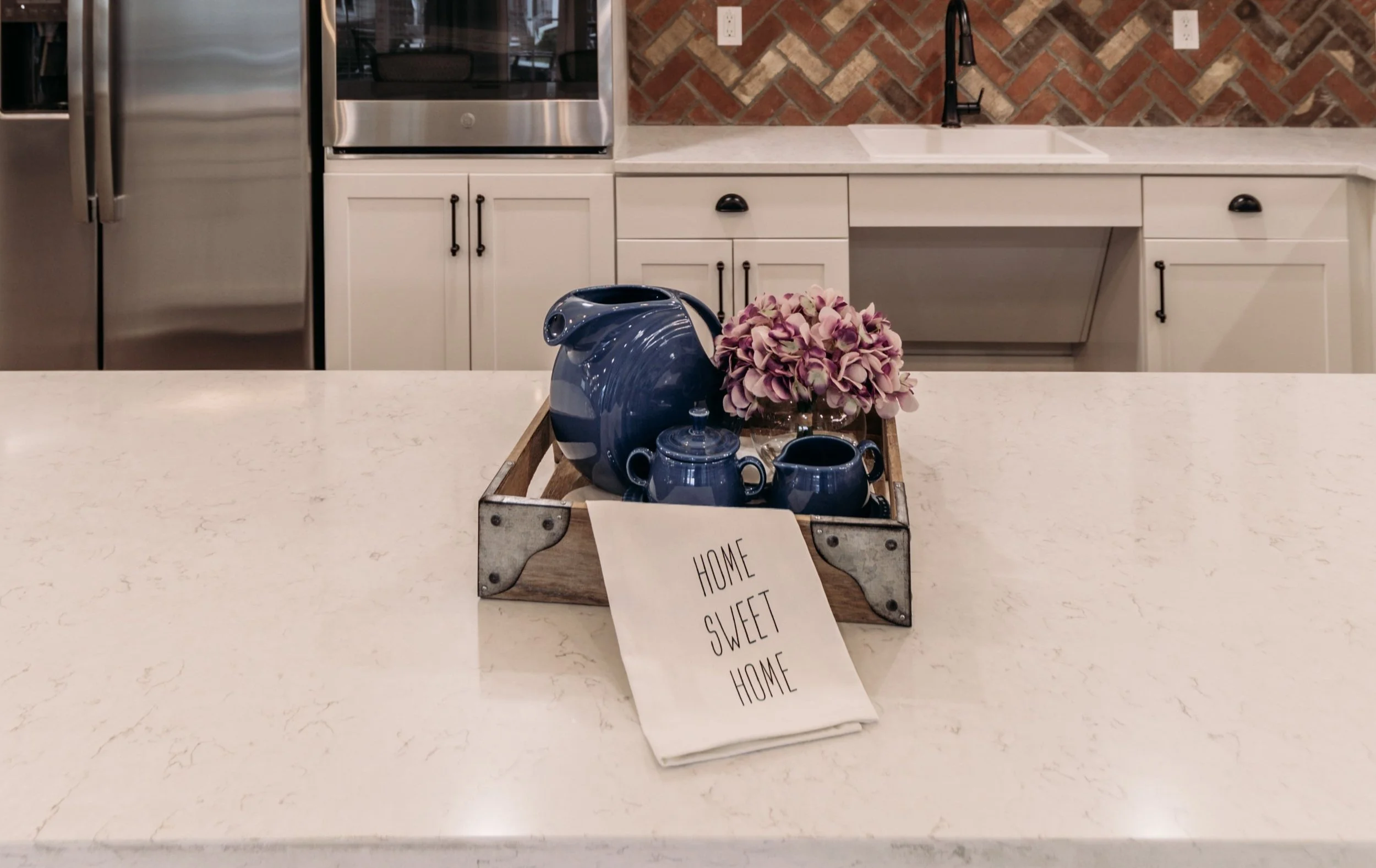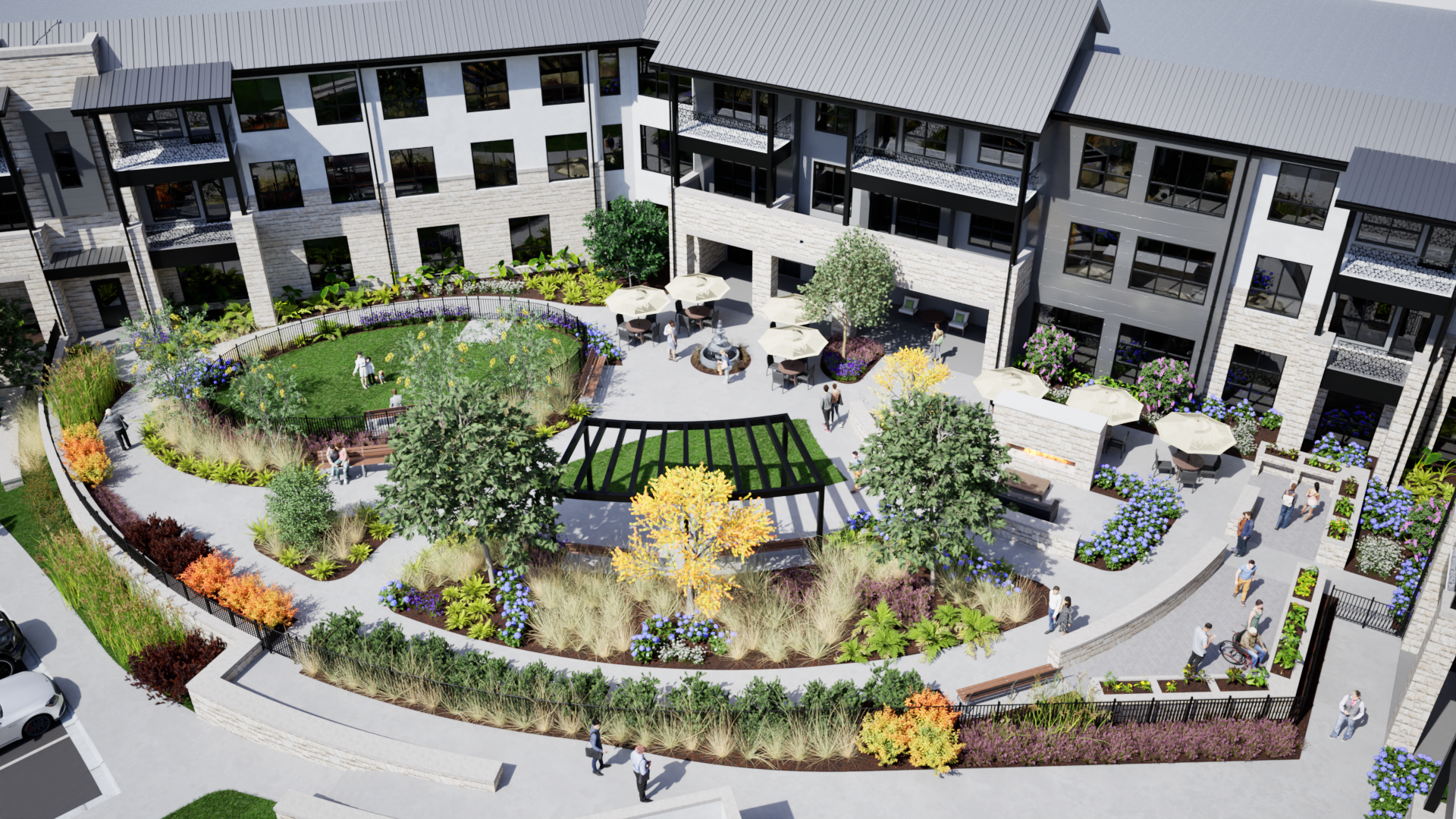Leveraging the Outdoors to Enhance Your Wellness Programming
Why is Wellness an important discussion when designing outdoor spaces in Senior Living?
Understanding seven dimensions of Wellness
The National Wellness Institute defines Wellness as, (1) “Wellness is an active process through which people become aware of, and make choices toward, a more successful existence.”
Dr. Bill Hettler, the co-founder of the National Wellness Institute, first introduced an interdependent model of holistic Wellness back in 1976. This model includes six dimensions of Wellness to assist individuals when working to improve their overall well-being. Dr. Hettler defines the six dimensions as Physical, Emotional, Intellectual, Social, Spiritual, and Occupational. (1) Over time, a seventh dimension, Environmental, was supported by research which multiple groups have accepted. Please note, this blog content relays our opinion of the various dimensions of Wellness and their impact on design for the use of outdoor spaces.*
When thinking about our state of mind and well-being, our connection with nature plays a significant role. Let’s take a moment to break down these dimensions, inclusive of outdoor spaces.
The PHYSICAL dimension focuses on physical activity, diet, personal health awareness and responsibility, and appropriately seeking medical attention (1).
We know from research, direct physical contact with the environment has significant, profound, and lasting health benefits. Why not design outdoor spaces that foster a desire to engage in self-directed activities, physical movement, and encourage healthy physical habits?
The EMOTIONAL dimension focuses on self-awareness, being positive about oneself and life, making decisions based on personal feelings, thoughts, and philosophies, developing autonomy, and an ability to independently cope effectively with stress (1).
Well-designed exterior spaces provide an opportunity for escapism as well as reflection, which may help combat depression.
The INTELLECTUAL dimension focuses on creativity, knowledge, skills, problem solving, and sharing those things with others (1).
Exterior spaces can provide mental inspiration and create environments conducive to stimulating mental activities, pursuing personal interests, and challenging residents with creative endeavors. Flexible exterior spaces also allow residents opportunities to teach others and interact with others that challenge them intellectually.
The SOCIAL dimension focuses on contributing to one’s environment, initiating communication with others, enhancing personal relationships, and the interdependence of community (1).
Well-designed exterior spaces encourage and create interaction by bringing people together through shared experiences, physical proximity, and opportunities to be closer to loved ones and family.
The SPIRITUAL dimension focuses on meaning and purpose in human existence (1). Spirituality can involve religion, but is much broader and includes introspection, meditation, fellowship, kindness, being grateful and compassionate, and establishing peace and harmony in our lives.
Suitable exterior spaces provide areas for self-reflection, to process and work through personal concerns, safe alone time, and opportunities to explore inner peace.
The OCCUPATIONAL dimension focuses on personal satisfaction and enrichment in life through work, a career, and contribution to others.
Adequately designed exterior spaces encourage residents to use and share their talents to develop new skills, continue to contribute, and ultimately foster purpose.
The ENVIRONMENTAL dimension focuses on our relationship living in harmony with the Earth, as well as minimizing harm to the environment.
Exterior spaces promote being one with the Earth, engaging all 5 senses to experience it truly. These spaces are also perfect opportunities to participate in socially responsible activities, work with the environment, and promote stewardship of our resources.
Multiple dimensions embraced in activity programs
Now that we have a base understanding of the dimensions we can quickly see how various dimensions cross each other when using outdoor spaces giving more significant benefit to the individual. Let’s take, for example, a walking trail. Along the trail are different elements to see and explore. One may have various types of trees, plant life, and birds speaking to the Intellectual dimension as your brain begins to analyze and categorize. Two, the physical task of walking along the trail is promoting movement and blood circulation giving light to the Physical Dimension. Third, the peace and tranquility of a quiet outdoor walk one with nature touch on the spiritual dimension where one may experience connection and in harmony with life. Three dimensions are touched in one well-positioned walking path.
Now consider we have along the path a gazebo with lawn adjacent. This space becomes flexible for various use and brings attention to the Social dimension where gatherings occur. On the lawn, Yoga and stretches may occur touching on the physical and spiritual dimensions. Outdoor games and entertainment events connect with intellectual, social and emotional dimensions. Further along, gardens and pet areas encourage resident’s connection with occupational, environmental, and physical dimensions.
It’s important to note that you don’t necessarily need large spaces when considering outdoor spaces to enhance your Wellness programs. The key is flexibility in the areas. Taking the time to think through the use of the spaces with the most gain for the seven dimensions of Wellness may bring you the best outcomes. Consider working with a Landscape Architect to creatively assist you with retrofitting an existing space or take a new development and incorporate a flexible design. The key is to bring your Wellness program outdoors, and your residents will surely follow.
Resource
(1) Hettler, Dr. Bill. “NEW! Multicultural Competency in Wellness Courses.” The Six Dimensions of Wellness - National Wellness Institute, 1976, www.nationalwellness.org/page/Six_Dimensions.
* This blog is NOT associated with the National Wellness Institute. The statements and comments are strictly the opinions of the author and the authors interpretations and experiences working in the field of Senior Living.
Contact us here or call us at 512-231-1910


















